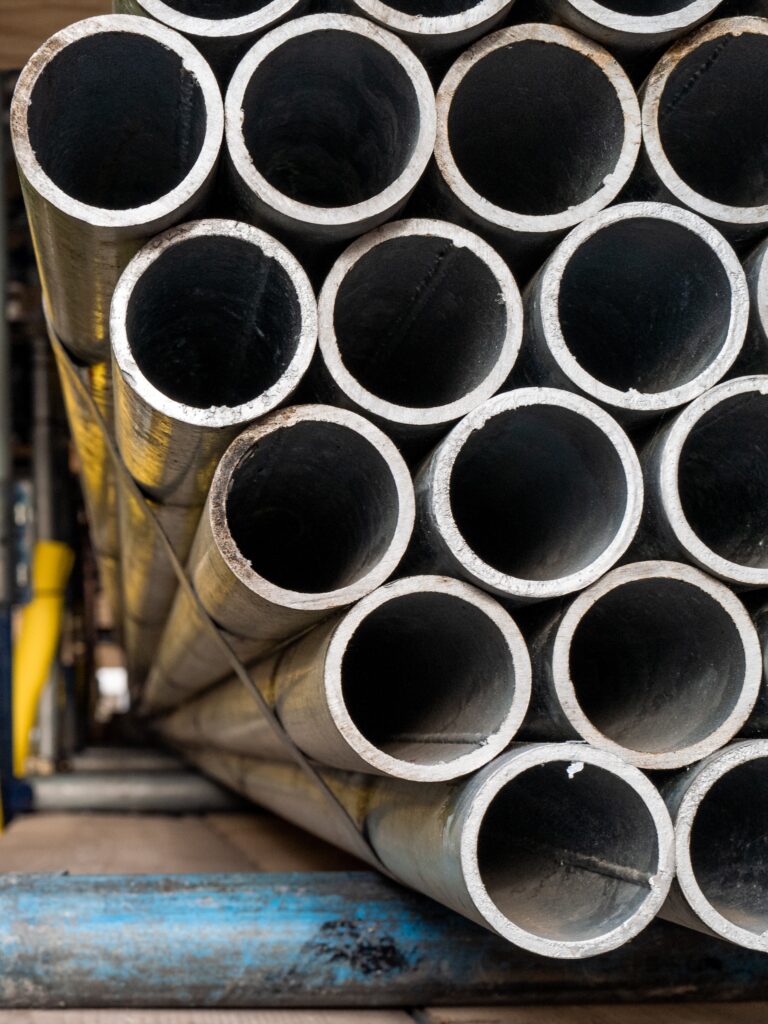Ironclad tenacity is one technical turn used as an attribute innate to steel, rendering it an unmatched contender within the construction cosmos when it comes to dealing with the forces of nature.
Steel’s unrivalled strength equips it to endure nature’s most formidable onslaughts, thus making it a favoured material for construction, especially in earthquake-prone areas. Also, one of the key reasons for its popularity is that steel frameworks prove lighter, more efficacious, and superior to their masonry wall counterparts, facilitating swifter installation, and can be more cost-efficient than alternatives – even in areas that do not require earth-quake-resistant structural engineering.

Earthquake Resistant Skyscrapers
While skyscrapers often garner attention as the quintessential use of steel in constructing their skeletal framework. Steel’s pliable characteristics make its structural network more malleable than its concrete counterpart, reducing the likelihood of damage during seismic occurrences or other tremor-inducing phenomena. Additionally, steel can transmute the energy of such events into pliant deformation, mitigating harm to the structural integrity. In other words, it may be a strong metal, but it can also bend while withstanding huge amounts of pressure.
Earthquake Resistant Residential and Small Commercial Properties
This resilient material finds application in an array of residential and commercial infrastructures. It is not only large buildings and other structures that require steel reinforcement for earthquakes, but also used for homes and small commercial properties. Therefore, irrespective of size, steel is used as an earthquake-resistant material.
Other Infrastructure Using Earthquake-Resistant Steel Solutions
The versatility of steel’s tensile attributes extends to the construction of myriad infrastructural projects, encompassing roadway and rail bridge supports, subterranean passages, underpasses, foundational elements, and sub-level automotive storage facilities. On the topic of structure, oil rigs, seaports, and airports also use earth-quake-resistant steel solutions.
What are the Disadvantages of Steel?
Steel’s tensile prowess is not without drawbacks, as it becomes prone to losing vigour during conflagrations, particularly at temperatures approximating 500 degrees Celsius (930 degrees Fahrenheit). Consequently, steel may warp or distort, necessitating frequent maintenance using protective boards or coatings such as fire-retardant materials.
Real-life examples of steel reinforcements for earthquakes
In earthquake-prone countries, building safety is a top priority. But in less-developed regions, poor practices and a lack of local building codes make it difficult to withstand an earthquake’s shock waves.
Buildings rely on a complex system of design elements to help redistribute the dynamic forces that travel through them during an earthquake. These elements include shear walls, cross braces, diaphragms, and moment-resisting frames.
- Mesh Reinforcement: Commonly referred to as wire mesh or welded wire fabric, it is a type of construction material used for reinforcing concrete slabs, masonry structures, and other building components. It comprises a grid-like arrangement of steel bars or wires, which are welded together at regular intervals to create a uniform and sturdy network. Companies such as Heaton Manufacturing provide mesh reinforcement for structural support. The company’s expert solutions enhance the tensile strength of concrete, reducing the likelihood of cracking and deformation under external forces or stress, such as earthquakes. And the same solution is also used on a number of other projects mentioned in this article.
- Shear Walls: Shear walls, typically made of panels and supported by diagonal cross braces, help to redistribute forces and prevent collapse from the building’s foundation. They also transfer the lateral force from the ground and help transfer the vertical loads to the structure’s walls, beams, floors, and decks.
- Diaphragms: Floor and roof diaphragms help to remove tension from the structure and push forces to the upper structures. They also prevent damage to the lower floors by helping to resist compression.
- Cripple walls: Cripple walls are short walls that rest on a house’s foundation and support the floor and exterior walls. When not braced, they can shift during an earthquake, increasing the chances of severe damage to the house and injury to individuals.
- Stronger Construction Joints: In order for a building to withstand earthquakes, its concrete and masonry components must be properly mixed, consolidated, and cured. In many less-developed areas, these elements are not properly poured or bonded together to achieve the desired ductile behaviour.
In short, steel is well-suited to tall buildings, shopping centres, commercial office buildings, industrial zones, oil platforms, nautical vessels, and other maritime structures where earthquakes and other forces of nature such as ocean surface movements are common.

